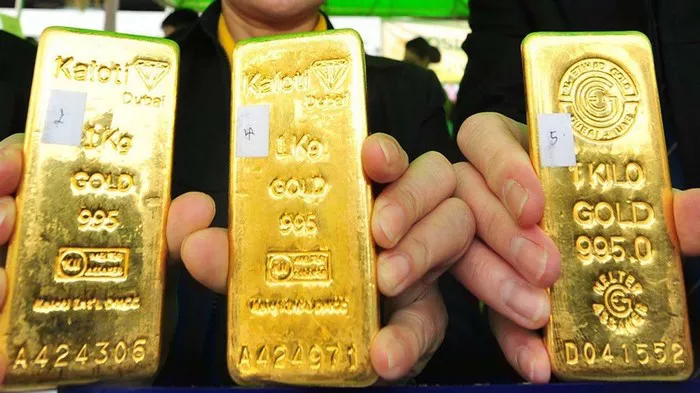Gold prices experienced a slight recovery from a 10-day low on Friday, finding some relief as the dollar retreated from its nearly six-month high. Additionally, weak economic data from Japan and concerns surrounding escalating tensions between the United States and China fueled safe-haven demand for the precious metal.
However, gold prices remained on course for a weekly loss, primarily due to renewed worries about rising interest rates following robust U.S. labor market and inflation reports earlier in the week.
Throughout the week, a surge in the dollar and Treasury yields had weighed on gold prices. Yet, some profit-taking in the greenback provided support to bullion prices on Friday. The dollar dipped by nearly 0.2% against a basket of currencies, while 10-year Treasury yields declined by 0.8%.
Spot gold rose by 0.3% to $1,925.04 per ounce, and gold futures expiring in December climbed 0.3% to reach $1,948.95 per ounce by 01:08 ET (05:08 GMT). Despite these gains, both instruments were still down by approximately 0.7% for the week.
Increasingly hostile rhetoric between Washington and Beijing, particularly following reports suggesting that China had instructed government officials to cease using Apple’s iPhone, prompted some investors to seek safety in gold. Concerns were mounting over potential disruptions to global trade resulting from a resurging U.S.-China trade conflict, with some U.S. lawmakers even advocating for a blanket ban on technology exports to China.
As the Federal Reserve’s September meeting approached, concerns over potential Fed actions were in play. Strong readings on jobless claims and service sector prices earlier in the week heightened fears that the central bank might maintain high interest rates. While the Fed is widely expected to keep rates steady at over 20-year highs later this month, it is also anticipated to maintain its hawkish messaging due to persistent inflation and a robust labor market.
The possibility of higher U.S. rates negatively affects gold, as higher rates increase the opportunity cost of investing in non-yielding assets. Although the chances of a U.S. recession have declined, suggesting weaker appeal for gold as a safe haven, economic challenges in other parts of the world may still support demand for the precious metal.
Friday’s data indicated that the Japanese economy grew less than initially estimated in the second quarter. This followed a series of weak economic readings from China, particularly in international trade and service sector activity.
In the realm of industrial metals, copper futures declined by 0.4% to $3.7453 per pound on Friday, extending their losses due to ongoing concerns related to China, a major importer of the metal. Apart from deteriorating U.S.-China relations, Chinese data revealed a 5% decline in copper imports in August compared to the previous month. This suggested that demand for copper was waning amid sluggish manufacturing activity and a property market facing financial challenges.
Investors are now awaiting additional stimulus measures from China, the world’s largest copper importer. However, Beijing has thus far adopted a relatively cautious approach to implementing further economic support.

